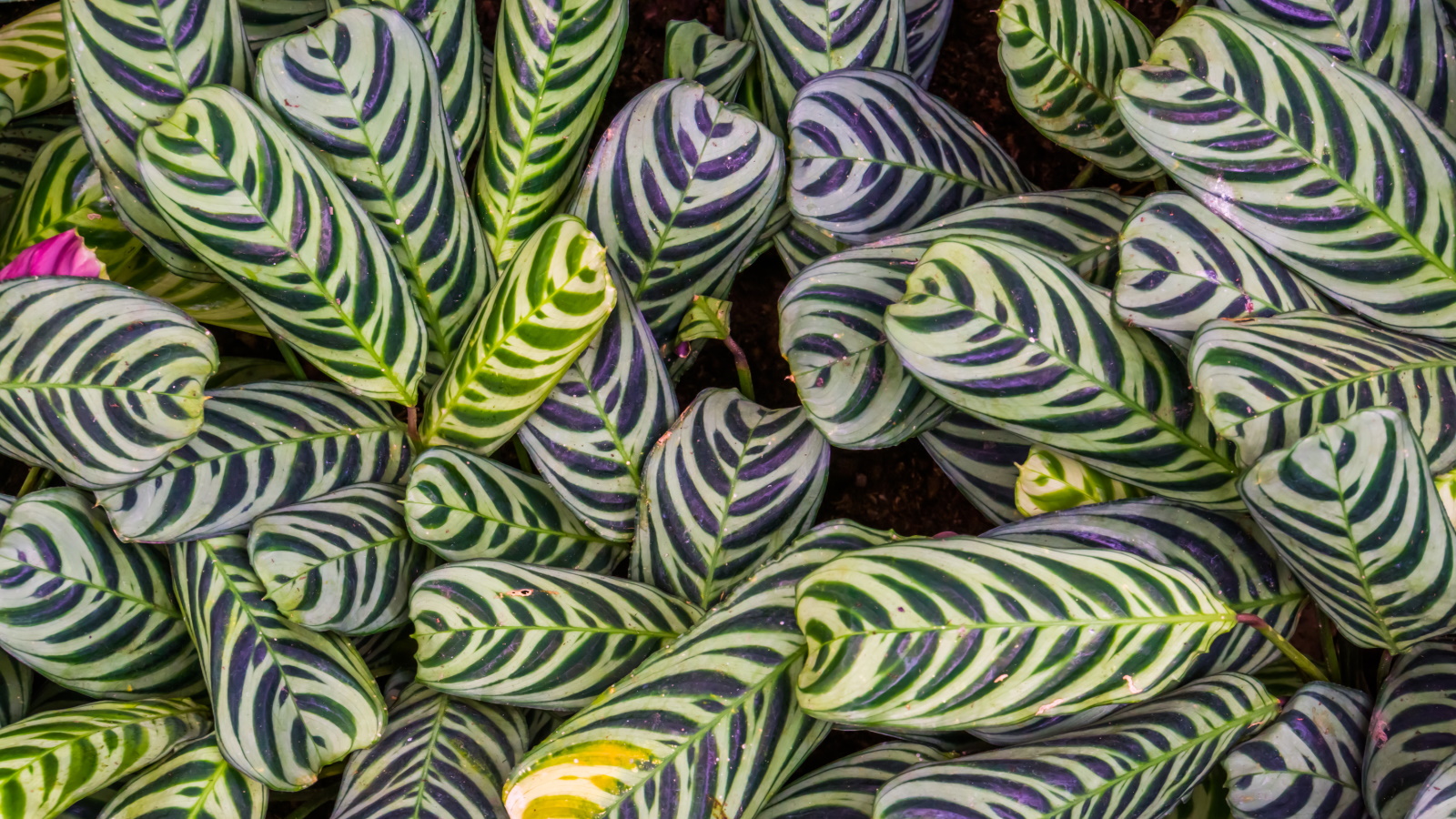Can you grow calatheas in water? How to grow these tricky houseplants hydroponically
It might sound surprising, but it's quite straightforward to grow water culture calatheas


Calatheas are arguably the fussiest members of the houseplant family. The slightest error in care for these indoor plants and they'll quickly show you they aren't happy. Despite this, it is actually possible to grow these popular plants in water.
If you're keen to grow houseplants without soil but aren't sure where to get started with hydroponic gardening for sustainability, then try experimenting with water culture calatheas. Although caring for calatheas can be difficult, once you understand the optimal growing environment they need, it's easy to grow them in water.
Here, we've compiled everything you need to now about growing calatheas in water with expert tips on how to do it successfully.
How to grow calatheas in water
Unlike growing orchids in water and rooting rose cuttings in water, growing calatheas in water isn't necessarily as simple as placing the plant in a vase. Rather, these fussy houseplants do best with a different set-up.
How to grow calatheas hydroponically

It's possible to propagate calathea cuttings in water, as photographed above, but when growing a water culture calathea, you need to ensure you have the right indoor growing system in place.
'You will want to set the calathea up in a hydroponic system. Just growing the plant in a container of water is not always sufficient to get healthy and abundant growth,' explains Julie Bawden-Davis, indoor plant expert at Healthy Houseplants.
A hydroponic system is often considered the future of indoor gardening. It consists of vessel of water, as well as grow lights for houseplants and other features to create the perfect growing environment for a range of plants and crops. This offers a range of growing support that calatheas need to thrive when growing in water.
Design expertise in your inbox – from inspiring decorating ideas and beautiful celebrity homes to practical gardening advice and shopping round-ups.
Before moving your potted calathea into a hydroponic system, make sure to clean off any soil from the roots. You can then place your calathea in the hydroponic vessel and submerge the roots in the water.
Watering calatheas can be tricky to master, so growing one in a hydroponic set-up can be beneficial to stop you over or underwatering. Plus, having a grow light fixture can ensure your calathea is receiving sufficient light. If your system doesn't have an attached grow light, use this grow light for houseplants from Amazon.
'Use a hydroponic system that includes an air pump and air stone to oxygenate the water,' suggests Julie. This hydroponic system from Amazon includes a pump to provide oxygen to your calathea's roots and keep the water clean and fresh.
Although it isn't as effective as a hydroponic system, it's not impossible to grow a calathea in a DIY set up of a vase or glass container. For this to be successful, it's best to place your water culture calathea somewhere with bright, indirect light.
Whether you use a hydroponic system or a DIY set-up, Julie also advises: 'Clean the container and rinse plant roots on a regular basis to prevent algae build-up.' Not doing so could also attract common houseplant pests and make your calathea susceptible to diseases.

Julie Bawden-Davis is a garden author and University of California Certified Master Gardener, who has written several gardening books, including Indoor Gardening The Organic Way. In addition to running HealthyHouseplants.com, she shares indoor gardening advice on her YouTube channel @HealthyHouseplants.
FAQs
How do you fertilize water culture calatheas?
If you're growing calatheas in water, it's wise to fertilize them to give them a boost of nutrients they would otherwise get from soil, such as nitrogen for leafy growth. 'Use a diluted hydroponic nutrient solution designed for delicate plants,' advises Tammy Sons, horticulturist and CEO of TN Nurseries. This plant food for hydroponic growing systems from Amazon is a good choice.
A common calathea mistake that many are unaware of making is using the wrong type of water. 'Calatheas can be sensitive to water, so use distilled or filtered water,' advises Tammy Sons.
If you find your calathea leaves are curling when growing in water, it's a sign you need to adjust something in its growing environment. This might be the amount of light it gets or its access to nutrients.

Tenielle is a Gardens Content Editor at Homes & Gardens. She holds a qualification in MA Magazine Journalism and has over six years of journalistic experience. Before coming to Homes & Gardens, Tenielle was in the editorial department at the Royal Horticultural Society and worked on The Garden magazine. As our in-house houseplant expert, Tenielle writes on a range of solutions to houseplant problems, as well as other 'how to' guides, inspiring garden projects, and the latest gardening news. When she isn't writing, Tenielle can be found propagating her ever-growing collection of indoor plants, helping others overcome common houseplant pests and diseases, volunteering at a local gardening club, and attending gardening workshops, like a composting masterclass.